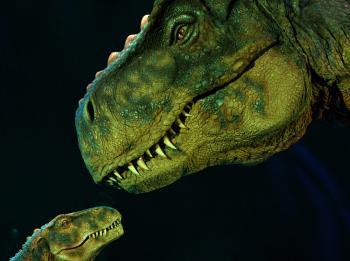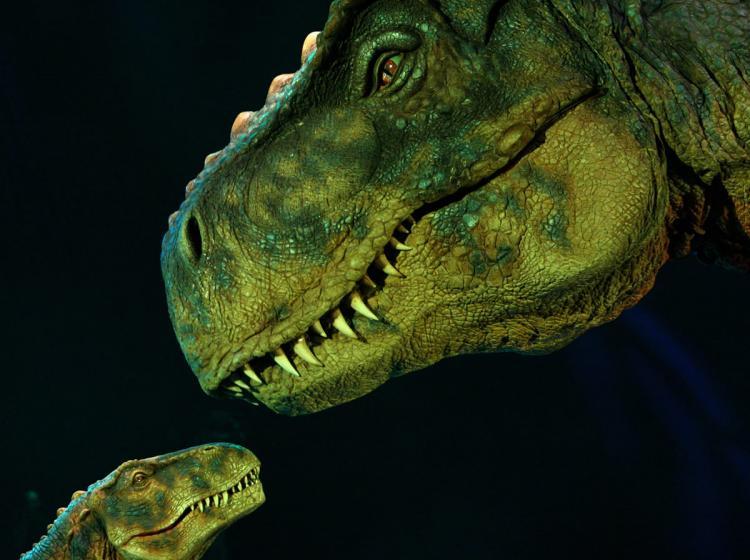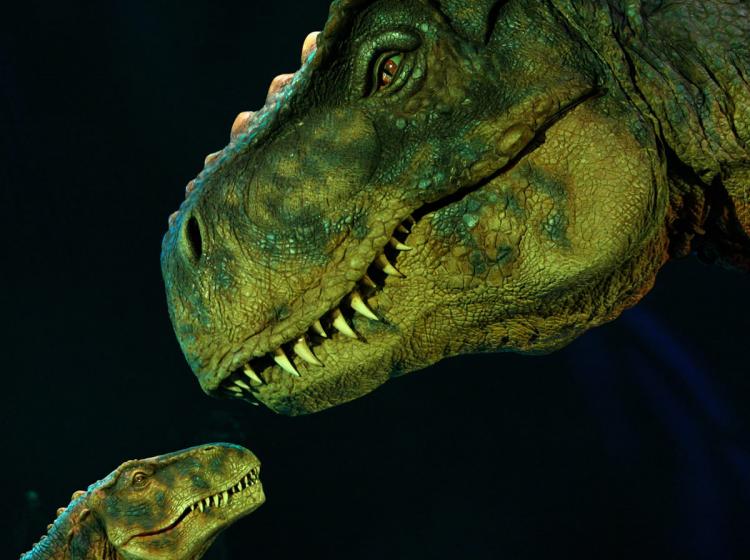Up to a third of dinosaur species named by scientists could in fact be babies or teenagers of previously known species, according to research by two leading U.S. paleontologists.
Where researchers had previously interpreted the differences in the various horns, frills, and bumps on the skulls of dinosaurs as indicators of different species, paleontologists John “Jack” Horner, who is curator of the Museum of the Rockies at Montana State University, and Mark B. Goodwin, assistant director of UC Berkeley’s Museum of Paleontology, said they are actually features that change as the dinosaur grows.
“Juveniles and [sub]adults of these dinosaurs look very, very different from adults, and literally may resemble a different species,” said Goodwin in a press release. “But some scientists are confusing morphological differences at different growth stages with characteristics that are taxonomically important. The result is an inflated number of dinosaurs in the late Cretaceous.”
In the new study, published in the journal PLoS One, Horner and Goodwin studied the internal structure of the fossilized bone and discovered that the skull ornaments are made out of a type of bone that can be rapidly deposited and reabsorbed, like the antlers of a deer.
After studying the skulls of several species of “dome-headed” dinosaurs, they concluded that Dracorex hogwartsia—named in 2006 after the “Harry Potter” books—and Stygimoloch spinifer are both juveniles of the earlier named Pachycephalosaurus wyomingensis discovered in 1943.
Dracorex was interpreted as the youngest, and Stygimoloch with its larger spikes was interpreted as a teenager. Horner and Goodwin had previously described a similar series of changes in the horns of the well-known Triceratops.
Evidence that the large-frilled dinosaur Torosaurus should be classified as an elderly Triceratops was presented by Horner’s student John Scannella at the Society of Vertebrate Paleontology meeting in September in Bristol, U.K.
Other dinosaurs that have recently suffered a similar fate include Nanotyrannus, a reportedly mini Tyrannosaurus rex, and several of the duck-billed hadrosaurs, according to the researchers.
Horner and Goodwin have been collecting dinosaur fossils from the late Cretaceous (145.5 to 65.5 million years old) Hell Creek rocks in Montana for 11 years.
Based on their work at Hell Creek, Horner believes up to a third of dinosaur species could turn out to be juveniles of known species. And it is not just North American dinosaurs that have been misidentified: Recent naming of horned dinosaur species from the Cretaceous of Asia may also have been overzealous, say the researchers.
“Early paleontologists recognized the distinction between adults and juveniles, but people have lost track of looking at ontogeny—how the individual develops—when they discover a new fossil,” Goodwin said.
If Horner and Goodwin are right, it will mean scientists will have to look again at how they classify different dinosaur species. This pruning of the dinosaur “tree of life” may encourage scientists to pay more attention to growth changes, Dr. Horner told The Epoch Times.
While the researchers have so far been studying dinosaur fossils from a similar time period, species from different time periods may also turn out to be the same animal, Horner said. However, he thinks they will mostly be species from the Cretaceous Period as ones from this time have the most noticeable changes in head ornamentation with growth.
While many paleontologists would agree with the general findings of this research, the estimation that one-third of species never existed is controversial. “Testing such hypotheses is difficult,” Hans-Dieter Sues, a paleontologist at the National Museum of Natural History in Washington, D.C., told National Geographic News, because “it requires more fossil material than is currently available.”






Friends Read Free